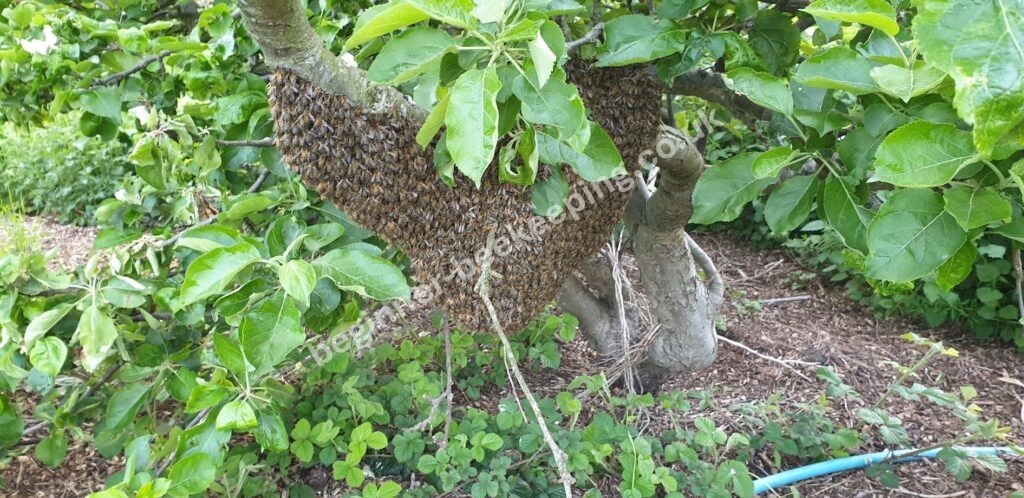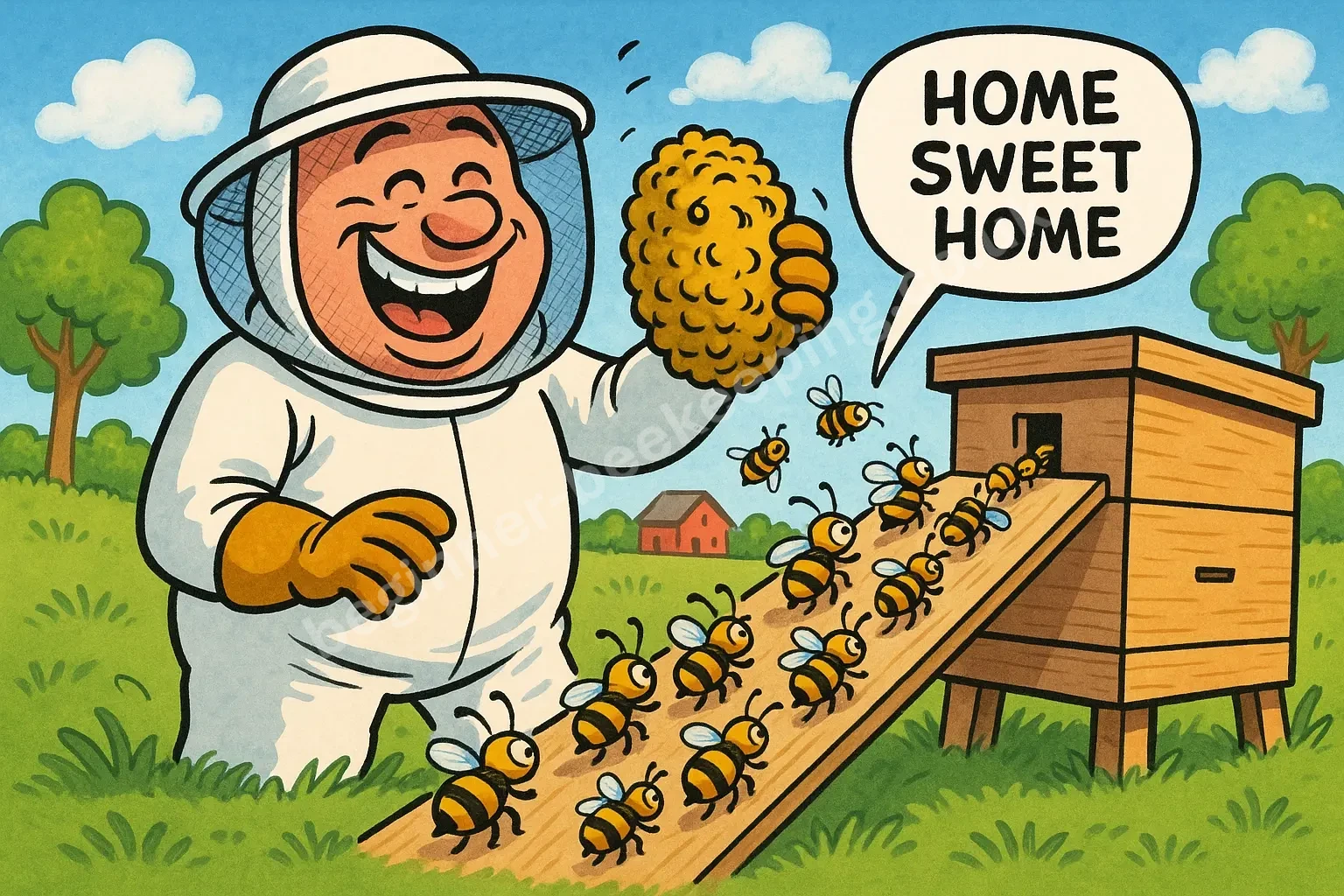In earlier years, most swarms were what might be called natural swarms – true reproductive events where colonies divided to create new ones. Beekeeping books and traditional advice were based on this model, and it was generally straightforward to hive swarms with high success. Today, however, the situation has changed, and failures are far more common.
Prime Swarms vs. Casts
Prime or first swarms are usually led by a mated, fertile queen, while casts (the second and subsequent swarms) contain one or more virgin queens. Historically, once a swarm was hived, it would thrive with minimal attention for the remainder of the season. Fertile queens began laying almost immediately, while virgin queens typically mated and started laying within 10 – 14 days. Queen failure was rare because swarming was the colony’s natural method of reproduction.
Changes in Swarm Characteristics

Since the early 2000s, many swarms no longer follow this reliable pattern. While natural swarms still occur, beekeepers are increasingly encountering “unnatural” swarms, often the result of widespread queen problems. Some prime swarms may even contain virgin or failing queens.
Beekeepers should be alert to these issues. A swarm thought to be queenless often actually contains a failing queen that has stopped laying. In such cases, removing her and requeening will resolve the problem. Always examine a swarm carefully – if it appears vigorous, it may be fine, but weak or unhealthy swarms may require treatment.
Concerns with Stray Swarms
Two common worries about collecting stray swarms are:
- Unknown origin: Swarms may produce colonies with poor temperaments or unsuitable genetics (e.g., if descended from imported queens). The solution is simple: allow the swarm to establish briefly. If the colony proves unsatisfactory, requeen it. Many experienced beekeepers routinely requeen collected swarms but still value the bees themselves.
- Risk of foulbrood: Although this is often cited as a major risk, it is actually very rare. In over five decades of handling swarms, cases of foulbrood have been almost nonexistent.
Because these risks are manageable, beginners are encouraged to collect swarms – it provides invaluable learning opportunities.
Precautions When Hiving Swarms
If the source colony is known and confirmed free of foulbrood, it is safe to hive the swarm on drawn comb. For swarms of unknown origin, extra precautions are wise:
- Swarms bring nectar or honey with them, which could carry spores of foulbrood. If housed directly on comb, this stores potential infection. To reduce risk, hive such swarms on fresh foundation and avoid feeding for the first 3 – 4 days.
- Position the hive some distance from established colonies until the swarm proves disease-free. Once confirmed, it can be relocated closer.
Preventing Absconding
Absconding is the most common issue when hiving swarms, but it is easily prevented. Here is a proven method:
- Prepare a hive with a full set of frames – comb if the swarm’s origin is known, foundation if not. Place the hive in shade, use a solid floor, and restrict the entrance to make the colony feel secure.
- Set a sloping board leading up to the entrance.
- If the queen is already clipped and marked, shake the swarm onto the board. If not, place them at the bottom so you can watch for her. Deposit a few bees at the entrance to help guide the rest.
- Clip and mark the queen if fertile, then return her to the swarm. (Do not clip virgin queens.)
- Allow the bees to enter naturally. If the queen is unclipped, place a queen excluder beneath the brood box for no more than three days – this prevents absconding while still allowing foragers to work effectively.
With this approach, even if the swarm attempts to abscond, a clipped queen will remain nearby, often on the hive front or underneath, making recovery easy.
Timing?
Many guides recommend hiving swarms in the evening, but this is unnecessary if proper precautions are taken. Swarms can be successfully hived at any time of day. Experienced beekeepers often manage multiple swarms in a single day, even hiving several from the same skep/box in quick succession.
